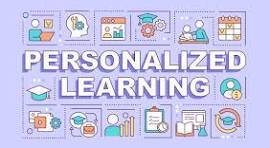In the dynamic world of education, effective communication is essential for fostering a positive learning Modeling Open Communication in Education environment. Open communication not only enhances relationships among students, teachers, and parents but also promotes a culture of trust, collaboration, and engagement. One of the most powerful ways to encourage open communication is for educators to model it themselves. In this blog, we will explore the importance of modeling open communication in education, the benefits it brings, and practical strategies for educators to implement in their classrooms and schools.
READ THIS: Communication
The Importance of Modeling Open Communication
1. Building Trust
When educators model open communication, they create an atmosphere of trust. Students and parents are more likely to feel comfortable sharing their thoughts, concerns, and ideas when they see teachers being transparent and approachable. Trust is the foundation of effective communication, and it fosters a sense of safety and belonging within the educational community.
2. Encouraging Student Voice
Modeling open communication empowers students to express themselves and share their perspectives. When teachers demonstrate that their opinions are valued, students are more likely to engage in discussions, ask questions, and contribute to their learning environment. This active participation enhances critical thinking and promotes a sense of ownership over their education.
3. Promoting Collaboration
Open communication encourages collaboration among students, teachers, and parents. When educators model effective communication practices, they set the tone for how interactions should occur within the classroom and school community. This collaborative spirit leads to stronger relationships and a more cohesive educational experience.
4. Facilitating Feedback and Growth
Modeling open communication creates a feedback-rich environment where both students and teachers can learn from one another. When educators openly share their experiences, challenges, and successes, they demonstrate that growth is a continuous process. This openness encourages students to seek feedback and view it as an opportunity for improvement rather than criticism.
Benefits of Modeling Open Communication
1. Enhanced Student Engagement
When teachers model open communication, students are more likely to feel engaged in their learning. They become active participants in discussions, contributing their ideas and perspectives, which enhances their overall educational experience.
2. Stronger Relationships
Modeling open communication fosters stronger relationships between educators and students, as well as among peers. When individuals feel heard and respected, it creates a positive classroom culture that supports learning and well-being.
3. Increased Parental Involvement
When educators communicate openly with parents, it encourages greater involvement in their child’s education. Regular updates, transparent communication about student progress, and invitations for feedback help parents feel connected and engaged in the school community.
4. Improved Problem-Solving
Open communication allows for the identification of challenges and the exploration of potential solutions. When stakeholders feel comfortable discussing issues, they can collaboratively brainstorm and implement effective strategies to address them.
Strategies for Educators to Model Open Communication
1. Be Approachable and Available
Educators should create an approachable demeanor that invites students and parents to engage in conversation. Maintaining an open-door policy, being present during breaks, and actively seeking out opportunities for dialogue can help establish a welcoming environment.
2. Share Personal Experiences
Teachers can share their own experiences, challenges, and successes with students. This vulnerability not only humanizes educators but also encourages students to open up about their own experiences. Sharing stories can create connections and foster a sense of community.
3. Encourage Questions and Discussions
Creating a classroom culture that values questions and discussions is essential. Educators should encourage students to ask questions, express their thoughts, and engage in meaningful conversations. This can be achieved through structured discussions, group work, and open-ended assignments.
4. Provide Constructive Feedback
Modeling open communication includes providing constructive feedback to students. Educators should focus on specific behaviors and outcomes, highlighting strengths while also addressing areas for improvement. This approach helps students understand that feedback is a valuable tool for growth.
5. Utilize Technology for Communication
Incorporating technology can enhance communication between educators, students, and parents. Utilizing platforms like email, messaging apps, and online discussion boards can facilitate ongoing dialogue and keep everyone informed about important updates and events.
6. Solicit Feedback Regularly
Actively seeking feedback from students and parents demonstrates that their opinions are valued. Educators can use surveys, suggestion boxes, or informal check-ins to gather input on their teaching practices and the overall classroom environment.
7. Celebrate Achievements Together
Recognizing and celebrating achievements—both big and small—can strengthen the sense of community within the classroom. Sharing successes fosters a positive atmosphere and encourages open communication about future goals and aspirations.
Conclusion
Modeling open communication in education is a powerful way to build trust, encourage student voice, and promote collaboration. By creating an environment where dialogue thrives, educators can enhance relationships, foster engagement, and facilitate growth for both students and themselves.
As we navigate the complexities of education
